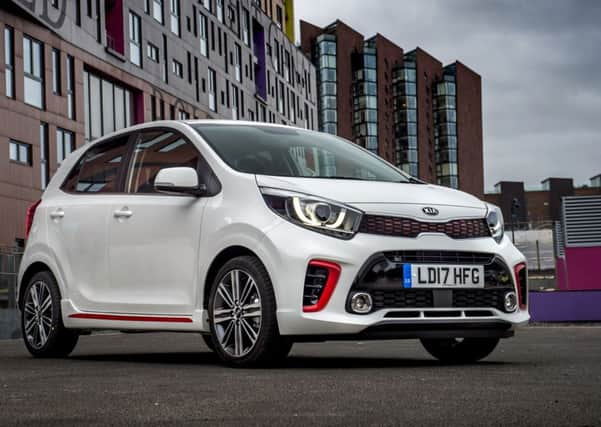Review: Kia Picanto GT-Line 1.25


Owning any car in Cuba is a luxury, and they have to earn their keep – hence the Picanto hire cars there plus larger Kias, various Hyundais from its parent company and Peugeots of all generations.
Fortunately, the price of even a new Picanto in Britain is nothing like €45,000 and you’ll probably enjoy it as a household companion, small and parkable, and reasonably sweet mannered for commuting or holidays. Prices start at £9,450 for the entry three-cylinder 998cc engine. The three-door model has been dropped for the convenience of five-doors and five seats.
Advertisement
Hide AdAdvertisement
Hide AdThis all-new model uses more high-strength steel, double the amount in the previous model at 44 per cent. It saves 23kg in body weight but, more importantly for the occupants, makes the structure stiffer, which means it does not flex as much. This makes it more comfortable by reducing harshness, noise and vibration – also helped by adding an additional 60 metres of adhesive bonding for the body sections. The outgoing model had a measly 7.8 metres. There is more insulation against noise, new engine mounts, quieter heater outlets and lowered screen wiper positioning to dim roar from the wind.
The length is the same – 3.6 metres, or nudging 12 feet, but slightly taller. The wheelbase is longer, the front overhang is shorter and the rear suspension now uses a u-shaped torsion beam and lighter components.
These are all the bits of a car you never see but, hopefully, feel the benefit of in handling and economy and, well, a happier life. Redesigning the body gave a small increase in room in the front, where the seats are set lower. Luggage capacity is increased.
The Picanto has had good reviews from the specialist Press and has the seven-year warranty which is a comfort for private owners who have invested their own cash. If you are new to Kia, the specification ladder is numeric, 1,2 and 3 and, in the case of the Picanto, a mock sporty GT-Line – the model tested here. With the 66bhp one-litre naturally aspirated engine it costs £11,950, rising to £12,450 with the 83bhp 1.25-litre four-cylinder turbo engine – also offered in upgraded GT-Line S spec at £13,950. All models use a five-speed manual gearbox but the 1.25 engine is offered with a four-speed automatic gearbox from £11,900 in Grade 2 trim.
While the intention is for “everyday” utility and not the hot hatch buyer, those who like a bit more fizz can have a 99bhp turbo direct injection one-litre petrol engine – the most muscle offered in a Picanto. It arrives at the end of the year. There are no plans for a diesel engine.
Catalogue ratings are around 64mpg for the entry model and just 101g CO2, and 61mpg and 106g for the 1.25 engine. The automatic model, however, slips to 52mpg and 124g. News on the 99bhp model is awaited.
On the entry grade 1 you get powered front windows, remote locking, USB and Aux slots, a 60/40 rear seat split, and steel wheels. Grade 2 adds air conditioning, powered rear windows and mirrors, Bluetooth and 14-inch alloys. Grade 3 adds 15-inch wheels, emergency braking, climate and cruise control with a speed limiter, digital audio and sat nav. GT-Line gets 16-inch alloys, twin exhaust, sunroof, rear camera, push button ignition and colour keyed cosmetic details. The S version has sat nav and display on a floating screen.
All models have torque vectoring which can sense when you are drifting in a corner and brakes the appropriate wheel to bring you back on course. The autonomous emergency brake can anticipate a shunt and stop or partially stop the Picanto. It is a £350 option on the lower grades. It will be rewarded by a high score in the Euro Ncap crash safety tests when the Picanto is submitted.
Advertisement
Hide AdAdvertisement
Hide AdThat’s enough on paper about the Picanto. On the road is where, so to speak, the wheels sometimes come off factory blurb.
You are boosted by a variety of red highlighting in this white car, with red and black grille sections, a very nice leather rimmed steering wheel and aluminium pedals with non-slip rubber treads. The quality picture fades with some scratchy plastics on the control area and door cladding but that’s not a major worry. Flick-out, push-button cupholders are a tasty touch.
The 0-62mph time of 11.6 seconds tells you it’s not a stunner from the lights but cars like this are “fast enough” and meet a need for an enjoyable town and country hatchback.
Verdict: Worth a trial if the size fits your life.